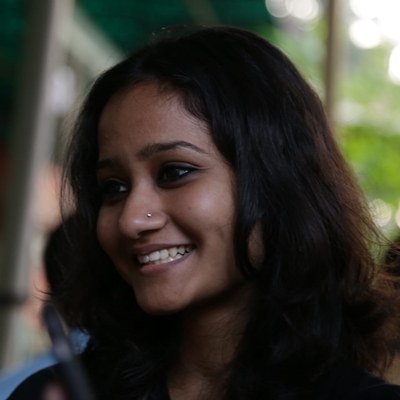INDIA’s capital Delhi choked with ‘severe’ air quality for the second consecutive day on Friday, with the 24-hour average AQI (Air Quality Index) hitting a high of 475 at 11 am before falling marginally to 468 at 4 pm and further to 456 at 5 pm.
The forecast indicates air quality is likely to remain ‘severe’ at least till Monday, with the Commission for Air Quality Management in National Capital Region and Adjoining Areas (CAQM) deciding to “watch the situation for a day or more, before invoking more stringent disruptive actions under Stage IV of GRAP (Graded Response Action Plan”.
The CAQM, which is a commission constituted by the Union Ministry of Environment and Forests, had invoked measures under Stage-III or the ‘severe’ category of the GRAP on Thursday. It, however, decided against invoking Stage-IV or the ‘severe plus’ category of GRAP on Friday since the average AQI of Delhi is “already showing a declining trend since afternoon”.
Further, the CAQM said “it’s only reasonable to give time” for the impact of measures under GRAP Stage-III to reflect on the average AQI.
A forecast issued by the Air Quality Early Warning System for Delhi, a project by the Indian Institute of Tropical Meteorology (IITM), said Friday that the air quality is “likely to improve marginally but remain in the ‘severe’ category from November 4 to 6”.
The forecast for the subsequent six days said that the air quality is likely to remain in the ‘severe’ to ‘very poor’ category.
Suspended pollutants kept the visibility low both on Thursday and Friday. At 7 am Friday, visibility at the Safdarjung weather station, the city’s base observatory, was 600 metres, while it was 500 metres at the airport at Palam.
The air quality was in the ‘severe’ category across parts of Haryana, UP and some parts of Rajasthan — Ghaziabad, Faridabad, Hisar, Jind, Noida, Greater Noida, Rohtak, Fatehabad, Bahadurgarh, Bhiwadi — as well on Friday. Greater Noida was the most polluted city with an AQI of 494 at 4 pm.
Calm conditions, with very slow winds, in Delhi, have been making it difficult for pollutants to disperse. But the wind speed picked up marginally Friday evening. “Calm conditions prevailed at the Safdarjung weather station on Friday. At Palam, a wind speed of 6-7 kmph was recorded in the evening, compared to lower wind speeds of around 3 kmph earlier in the day,” said Kuldeep Srivastava, scientist, India Meteorological Department (IMD).
“Till at least November 5, calm conditions are likely to prevail at Safdarjung, while Palam could see northwesterly winds,” Srivastava said.
Northwesterly winds can carry stubble burning smoke from Punjab and Haryana into Delhi-NCR. The fire count in Punjab has been more than 1,000 over the past five days, and on Friday, it was as high as 1,551, according to data from the Indian Agricultural Research Institute (IARI). On October 27, it was 766.
Delhi’s worsening air quality this time coincides with the peak stubble burning season. “The peak period for burning is usually from around October 27 to November 7-10,” said V K Sehgal, Principal Scientist, IARI.
Data from the Central Pollution Control Board (CPCB) shows that the average AQI of 468 at 4 pm recorded on Friday is worse than what was recorded in November last year. When Delhi saw a ‘severe’ air spell in November last year, the worst AQI that was recorded was 450 on November 3. On that day, however, CAQM had directed implementation of all actions under GRAP Stage-IV since as per the forecast, the AQI was likely to be ‘Severe/ Severe +’ over the next couple of days.
In November 2021, Delhi saw a figure of 471 on November 12. In 2020, Delhi saw an AQI of 477 on November 9 and 476 on November 10.
On Thursday, the contribution of stubble burning to PM2.5 levels in Delhi was 25.23 per cent, the highest it has been so far this season, and up from 18.31 per cent on Wednesday, according to data from IITM’s Decision Support System. The system estimated that the contribution on Friday is likely to be higher at around 35.42 per cent.
The CPCB identified PM10 and PM2.5 as the primary pollutants in Delhi on Friday, and particulate matter levels across the city remained several times above the prescribed standard. At the Dr. Karni Singh Shooting Range in South Delhi, for instance, which was the most polluted spot in the city at 6 pm with an AQI of 489, PM10 levels hit a high of 738 µg/m3 at 9 am on Friday, which is more than seven times the national ambient air quality standard of 100 µg/m3 for 24-hours. Similarly, the PM2.5 level peaked at 516 µg/m3 at 9 am on Friday, more than eight times the prescribed 24-hour standard of 60 µg/m3.
 Abhinaya HarigovindAbhinaya Harigovind is a correspondent with The Indian Express. She wr… read more
Abhinaya HarigovindAbhinaya Harigovind is a correspondent with The Indian Express. She wr… read more
